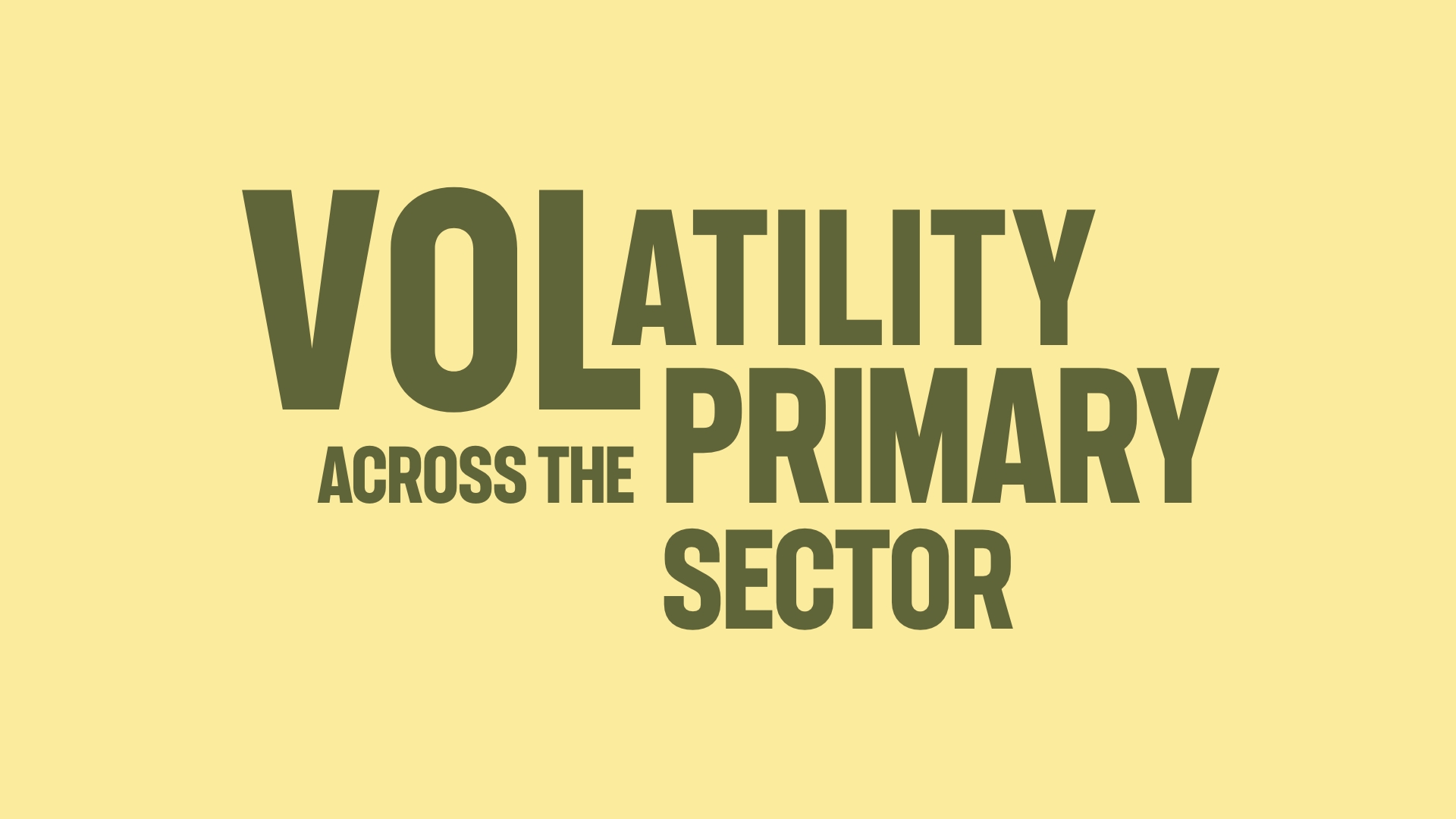Emerging trends in agrimarketing
March 2025

As we settle into 2025, agrimarketers are facing a landscape that is evolving faster than ever. From AI-driven precision marketing to a shifting focus on sustainability messaging, the strategies that worked yesterday are rapidly being reshaped by technology, economics and shifting consumer expectations.
Our close engagement with agribusinesses across Australasia and beyond has given us a front-row seat to the key changes affecting marketers. So, let’s dive into the trends we’re seeing shaping the industry this year and look at what they mean for agribrands?
AI-powered precision marketing
One of the most transformative forces shaping agrimarketing – and the world – in 2025 is artificial intelligence. While AI-driven marketing isn’t new, what’s changing is its accessibility and effectiveness in the agribusiness space. The industry has historically been slow to adopt emerging martech tools, often constrained by fragmented data systems and traditional sales models. But as more agribusinesses invest in digital transformation, the potential of AI is becoming impossible to ignore.
AI-driven customer segmentation, predictive analytics and automated communication tools are allowing brands to target farmers with unprecedented precision. Instead of broad-stroke marketing campaigns, agribusinesses are now able to deliver highly relevant messaging, tailored not just to an audience but to an individual farm’s specific needs, seasonal cycles and purchasing behaviour. For brands, this means higher conversion rates and better ROI; for farmers, it means a more personalised, valuable experience.
Yet, despite its promise, AI in agrimarketing must be handled with care. Automated systems that lack human oversight can lead to irrelevant or impersonal interactions, alienating the very customers they are meant to engage. The real winners in this space will be those who blend AI’s efficiency with a deep, human understanding of the farmer’s world.
Sustainability is here to stay
Another force that can’t be ignored is the evolution of sustainability messaging. For years, agribusinesses have positioned sustainability as an add-on – an optional brand value rather than a necessity. That’s no longer an option. Despite a seeming reversal of local and global regulatory pressure, consumer expectations and market demands are converging to make sustainability a non-negotiable aspect of agrimarketing. Global food brands and retailers are setting aggressive environmental targets, and they expect their entire supply chain – in large part with a focus on farmers and growers – to meet those standards.
The days of broad, feel-good sustainability claims are over. In 2025, brands must prove their commitment with measurable impact. Transparency is no longer a buzzword; it’s a business imperative. For agrimarketers, this means moving beyond vague commitments and weaving sustainability into every aspect of brand storytelling, from the sourcing of inputs to the final product in consumers’ hands.
But the biggest challenge isn’t in crafting the right messaging – it’s in ensuring that sustainability efforts are substantive and credible. Greenwashing will backfire faster than ever in an era where consumers and industry players alike demand accountability. Agribrands that embed sustainability authentically into their operations will not only meet expectations but set themselves apart in a marketplace where differentiation is increasingly difficult.
Going direct
The shift toward direct-to-farmer digital engagement is another trend that is redefining the agribusiness landscape. Traditionally, the sector has relied heavily on reseller networks and distribution channels, but cracks in this model are becoming more evident. Farmers today expect more direct interaction with brands, better access to information and seamless digital purchasing options. The success of companies investing in e-commerce platforms – as an example we’ve worked with Agnition to launch Ravensdown’s first e-commerce shop Resupply – alongside digital loyalty programmes and direct customer support models is a clear sign that digital models are becoming the norm.
This doesn’t mean that distributors and resellers are obsolete; rather, brands need to find a way to balance direct engagement with the existing supply chain. The companies that master this balance – leveraging digital tools to complement rather than replace traditional models – will build stronger, more resilient customer relationships. The shift to digital engagement is not just about convenience; it’s about control. Owning the customer relationship means owning the data, insights and loyalty that drive long-term success.
Influencer marketing comes of age in agribusiness
Perhaps one of the most underestimated yet powerful forces in agrimarketing right now is the rise of agrinfluencers. For an industry built on trust and relationships, the growing role of peer-to-peer influence should not come as a surprise. Farmers trust farmers. They look to industry experts, agronomists and fellow producers for guidance on what works in real-world conditions. The rise of digital communities has amplified this trust, making influencer marketing one of the most authentic and effective ways to engage agricultural audiences.
But there’s a significant caveat: authenticity is everything. Farmers can spot corporate spin from a mile away and any attempt to force an influencer relationship will come a cropper. The agribrands that will thrive in this space are those that work with influencers as partners rather than promotional mouthpieces, co-creating content that provides genuine value.
Whether through on-farm trials, behind-the-scenes industry insights or knowledge-sharing webinars, brands that empower real voices in the sector will build credibility in ways that traditional advertising struggles to do.
Agribrands that embrace the power of influencers and build meaningful partnerships with the right voices will find themselves at the heart of the most important conversations happening in the industry. And that’s gold.
A shift in marketing investment
There is an undeniable shift in how agribusinesses are approaching their marketing investments. The economic climate remains unpredictable and businesses are facing a balancing act between short-term sales activation and long-term brand-building. Performance marketing delivers immediate ROI, but brand marketing builds the trust and recognition that sustain a business over time.
We’re encouraging our clients to adopt a two-speed approach – leveraging data-driven performance campaigns to drive conversions while simultaneously investing in brand storytelling and thought leadership. The evidence that this drives improves ROI is overwhelming and it should no longer be seen as a choice between brand and performance; it’s about integrating both into a cohesive strategy.
Still it seems some agrimarketers and their stakeholders struggle to see past short-term metrics and are continue to risk becoming transactional players with little long-term defendable equity. Yes focussing on the long term makes it harder to justify marketing spend, but the key is balance – ensuring that every dollar spent contributes both to today’s bottom line and tomorrow’s brand equity. Anything else is a race to the bottom.
Economic uncertainty and the case for brand building
Global economic volatility is nothing new, but the uncertainty right feels particularly acute. The intersection of shifting U.S. economic policy, foreign trade tensions and broader geopolitical instability is creating unpredictability for commodity prices – something that directly affects New Zealand’s agricultural exports and, by extension, our farmers and growers.
While nobody can predict exactly how these factors will play out, the timing is unfortunate. We’re just seeing better market prices and in some cases record payouts, but we’re not out of the woods just yet. Farmers need a few good years to clear the debts and really start focussing on the future and that’s hard to do when times are so uncertain.
Agrimarketers need to resist the urge to tighten their belts and put marketing spend on hold until the dust settles. History has shown that no matter what happens to the global economy from here – and let’s be honest nobody really knows – investment is needed to get through it.
Should the economic headwinds continue and lead to a downturn, we from history that strong brands weather the storm far better than weak ones. When commodity prices fall and market conditions become tougher, buyers gravitate toward brands they trust – brands with clear value propositions and strong reputations. Pulling back on brand during uncertain times only makes a business more vulnerable, eroding long-term equity and making it harder to recover when conditions improve.
Conversely, if the economy remains stable or even strengthens – those with strong brands built on consistent investment will be positioned ahead of the pack, ready to capture demand when spending picks up.
The lesson here is clear. Uncertainty isn’t a reason to pause brand investment. It should be a reason to double down on it. The businesses that emerge strongest from volatility will be those that understand the value of brand resilience, positioning themselves not just for survival, but for long-term growth.
Change is constant, but some things remain the same
The always-shifting agrimarketing landscape is one of both challenge and opportunity. Technology, sustainability, transformative digital models, influencer-driven credibility and balanced investment strategies are looking key to building competitive advantage through marketing.
The strongest agrimarketers will take a proactive stance to these trends, getting ahead of them rather than reacting to their competitor’s moves. The brands that thrive will be those that embrace change, tell meaningful stories and above all, keep the farmer at the centre of everything they do.
In a world where attention is fragmented and trust is hard-won, the future still belongs to those who engage with clarity, authenticity and strategic intent. Some things never change.




